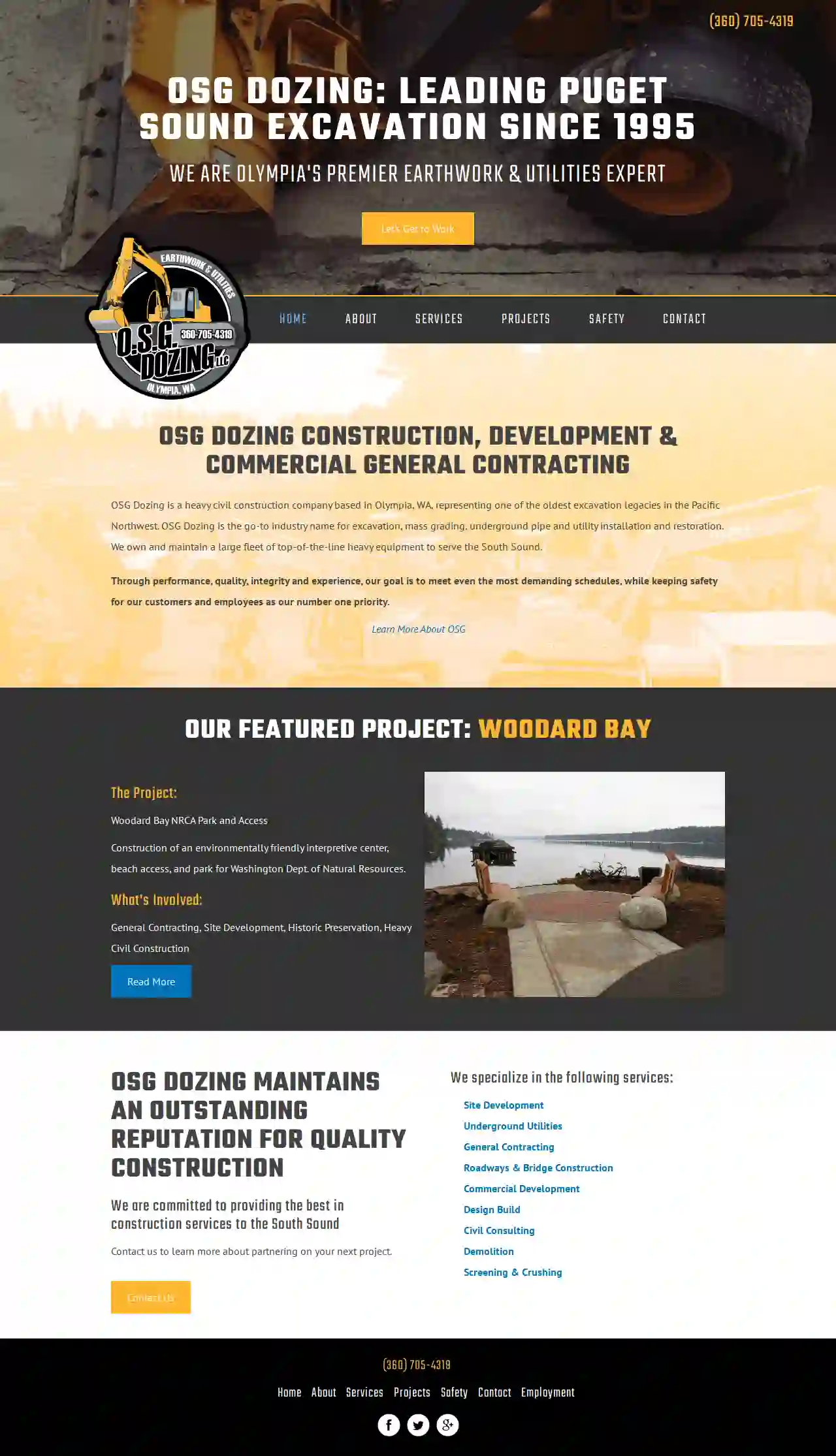Asbestos Removal Contractors Olympia
Find top Asbestos Testing in Olympia
Receive multiple Asbestos Removal quotes for your project today! Compare profiles, reviews, accreditations, portfolio, etc... and choose the best deal.
Service Needed
City or Town

OSG Dozing, LLC.
46 reviewsOlympia, US- Services
- Why Us?
Get Quote
Over 3,943+ Excavation Pros in our network
Our excavation contractors operate in Olympia & surrounding areas!
ExcavationHQ has curated and vetted Top Excavation Businesses arround Olympia. Find a top & trustworthy contractor today.
Frequently Asked Questions about Asbestos Removal
Find answers to common questions about asbestos removal and abatement to help you make informed decisions for your project in the USA.
- Chrysotile (white asbestos):
- Amosite (brown asbestos):
- Crocidolite (blue asbestos):
- Anthophyllite:
- Tremolite:
- Actinolite:
Can I remove asbestos myself?
Asbestos removal is highly hazardous and should never be attempted by untrained individuals. Asbestos fibers are microscopic and can easily become airborne during removal, leading to dangerous exposure. Disturbing asbestos-containing materials without proper precautions can contaminate your home and put you and your family at risk. Always hire a licensed and certified asbestos removal professional for safe and compliant abatement.
What is a licensed asbestos removal contractor?
A licensed asbestos removal contractor is a professional who has obtained the necessary licenses and permits from the relevant authorities to legally perform asbestos abatement work. These licenses signify that the contractor has met specific requirements for training, experience, and safety practices to handle asbestos removal safely and in compliance with regulations. Always verify a contractor's licensing before hiring them for an asbestos project.
What are asbestos air monitoring and clearance testing?
Asbestos air monitoring and clearance testing are crucial steps after asbestos removal to ensure the safety of the environment and building occupants. Air monitoring involves collecting air samples during asbestos abatement to measure the concentration of asbestos fibers in the air. Clearance testing is conducted after the removal process is complete to verify that asbestos fiber levels are below permissible limits. These tests are performed by independent laboratories and are essential for confirming the safe reoccupation of the area.
What are the different types of asbestos?
There are several types of asbestos, including:
Can I remove asbestos myself?
Asbestos removal is highly hazardous and should never be attempted by untrained individuals. Asbestos fibers are microscopic and can easily become airborne during removal, leading to dangerous exposure. Disturbing asbestos-containing materials without proper precautions can contaminate your home and put you and your family at risk. Always hire a licensed and certified asbestos removal professional for safe and compliant abatement.
What is a licensed asbestos removal contractor?
A licensed asbestos removal contractor is a professional who has obtained the necessary licenses and permits from the relevant authorities to legally perform asbestos abatement work. These licenses signify that the contractor has met specific requirements for training, experience, and safety practices to handle asbestos removal safely and in compliance with regulations. Always verify a contractor's licensing before hiring them for an asbestos project.
What are asbestos air monitoring and clearance testing?
Asbestos air monitoring and clearance testing are crucial steps after asbestos removal to ensure the safety of the environment and building occupants. Air monitoring involves collecting air samples during asbestos abatement to measure the concentration of asbestos fibers in the air. Clearance testing is conducted after the removal process is complete to verify that asbestos fiber levels are below permissible limits. These tests are performed by independent laboratories and are essential for confirming the safe reoccupation of the area.
What are the different types of asbestos?
There are several types of asbestos, including:
- Chrysotile (white asbestos):
- Amosite (brown asbestos):
- Crocidolite (blue asbestos):
- Anthophyllite:
- Tremolite:
- Actinolite: